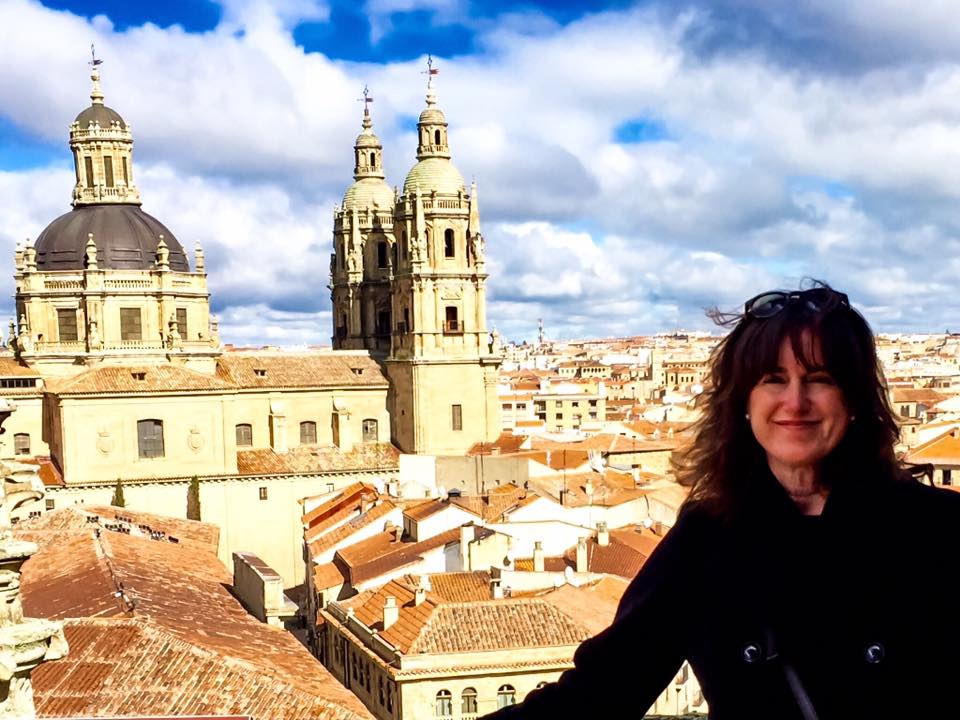
Salamanca, located north west of Madrid in Spain, is arguably one of the most beautiful and historic cities in the country. The Castilian spoken there is considered to be the purest thus attracting thousands of foreign students each year looking to learn Spanish.
Founded in 1218, the university of Salamanca is the oldest in Spain and the third oldest in Europe. It is, to this day, one of the crown jewels in the university system of the country. Miguel de Unamuno, or Don Miguel, as he was often referred to was its rector for a time from 1901 to 1924.
The famous Theologian and Professor from the University of Salamanca, Fray Luis de León, was incarcerated by the Inquisition from 1572 to 1576 and cleared of all charges with the admonition to be more careful of the content of his writings. It is said, that when he returned to the classroom he simply said: Dicebamus hesterna die (“As we were saying yesterday….”) not wanting to give any credit to the time he spent in the prison of the Inquisition.
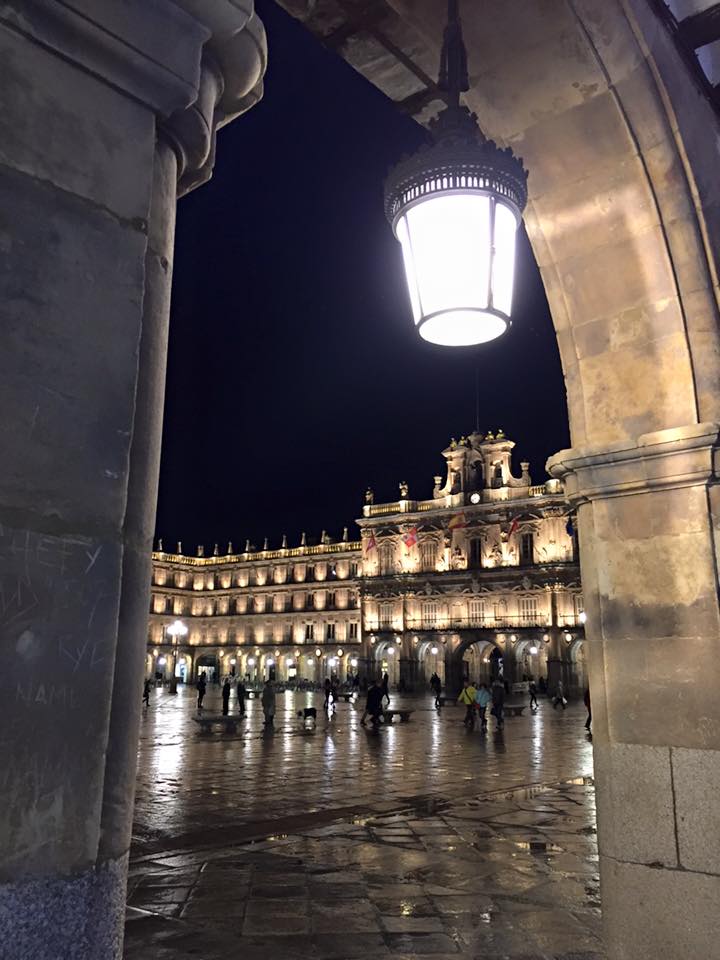
The Plaza Mayor of Salamanca is without question the most beautiful in Spain. The older generation of “Salmantinos” (as natives of this province are called) still talks about Sunday afternoons, when single men would come to the Plaza and walk around it clock wise while women would come and walk counter clock wise. This was the equivalent of online dating up until 50 years ago in the city. Today many lovers and friends meet under the arches of this stunning structure and enjoy the cafes and restaurants that surround the plaza and make it come alive every day.
The cathedrals of Salamanca are of immense beauty. I say ‘cathedrals’ because there are actually two and they are attached to each other. The original church is romanesque and it contains the first classrooms of the university and some of the most intricate and best preserved medieval frescos and tombs I have seen.
The city wanted to build a new cathedral in the XVI century with the idea of tearing the old one once construction was completed. As the project run out of money, the old cathedral was left in place and the entire structure embodies today one of the most remarkable juxtapositions of Romanesque and Baroque architecture.
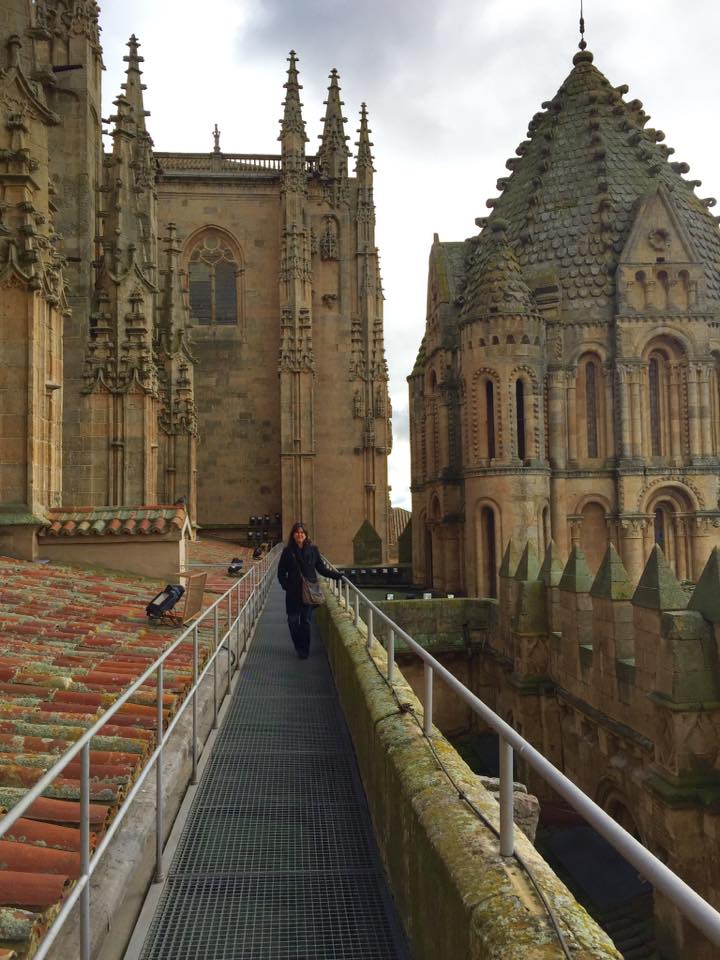
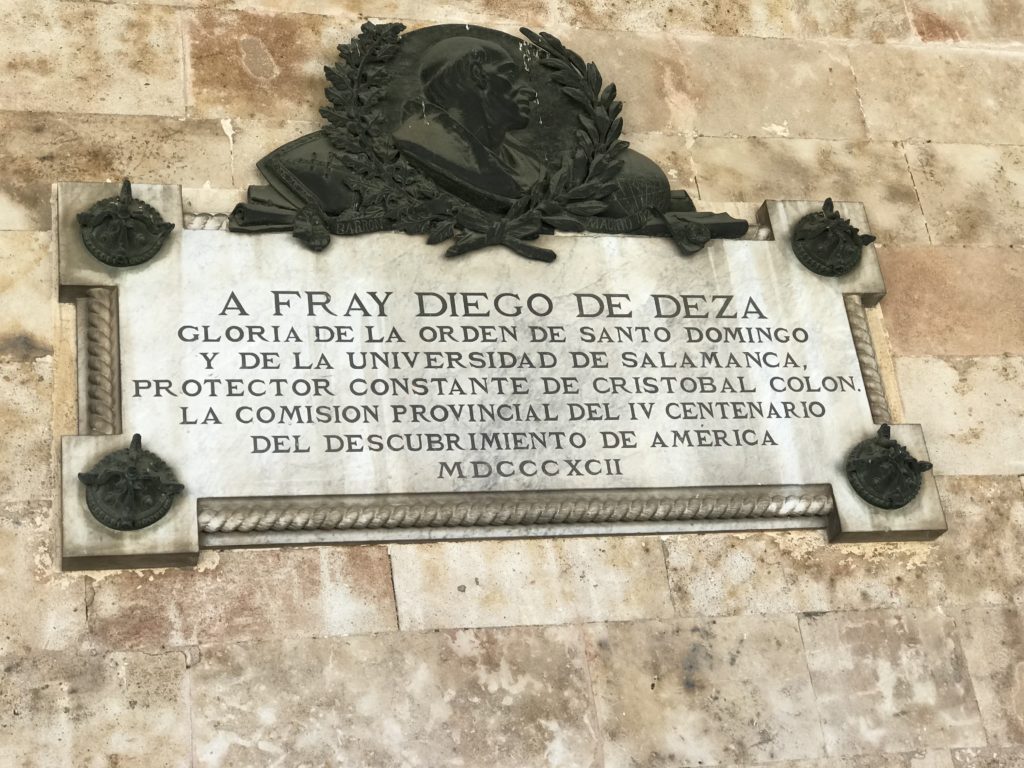

in the cathedral of Salamanca
But within the walls of this majestic and proud city lays another treasure: The story of Fray Diego Deza, a friend and mentor to Christopher Colombus and responsible for ensuring that Queen Isabella of Castile and King Ferdinand of Aragon would fund the voyage through the Atlantic that would change the world forever.
Diego Deza fascinates me as a Historian as a scholar, but in the interest of full disclosure he and I belong to the same family. My great grand mother, Maria Jose Deza was a descendant of that family and my genetic link to this figure made the idea of researching this part of our history even more attractive.
In 2016 I was sent by my college to lead a group of students for a semester abroad. Upon arriving to the city I made a visit to the cathedral and walked on its roof as it is open to the public. I introduced myself to the man in charged. He was very friendly (as most Spaniards tend to be I am happy to say). We spoke of the city and he asked me where I was from and how long I would be staying. I explained that I was related to Deza and that I was going to be conducting some research in the archives of the cathedral.”Oh” he claimed “you must speak with Raul, he will be in the archives from 9 until 4 pm….but wait! there is Raul!” as he said that, I saw Raul walking toward us on the roof of the cathedral where he had been busy changing some lights. “I guess in this day in age everyone needs to multi task in order to keep things running smoothly” the attendant said.
Raul introduced himself to me and invited me to visit the archives. It was there that I had letters from King Ferdinand written to Diego Deza, it was there that I read the stories of the Monastery of San Esteban in Salamanca, where he lived and where he gave housing to his good friend Christopher Colombus while they awaited resolution from the Monarchs about his proposed trip.
Fray Diego Deza was born in 1443 in a noble family with Galician ancestry. He started his Studies in the University of Salamanca and after he finished he became the prior of the convent of San Esteban and between 1477 and 1486 he was also a Professor of Theology at the University.

Diego Deza was 8 years older than Colombus and they crossed paths for the first time in Salamanca in 1486 when he was 43 and Colombus 35. The sailor had been playing with the idea of reaching the Indias for about 6 years at that point, but the truth of the matter is that many in Portugal, where he had been living since 1479, were doing the same thing. It was there that he married Felipa Moniz de Perestrelo whose father was a nobleman, a well known cartographer and the former governor of Porto Santo in Madeira and it was thanks to his maps that Colombus became convinced that he could reach the Indias through the Atlantic.
Deza had been an exemplary student having been a disciple of figures like Antonio de Nebrija (author of the first Spanish grammar book). He was also a brilliant Professor and Theologian. It is not surprising that Queen Isabella and King Ferdinand became close to him during their trip to Salamanca in 1480, in fact, they were so impressed by his character and knowledge that they named him royal teacher to their only male son Prince Don Juan heir to the throne of Castile and Aragon. Don Juan died young, presumedly of syphilis. Originally Diego Deza had him buried in Salamanca where he lived, but King Ferdinand later wrote a letter to him (which I had in my hands and studied in the archives of the Cathedral of Salamanca) giving him instructions to have the cadaver moved to Ávila, where it can be visited today.
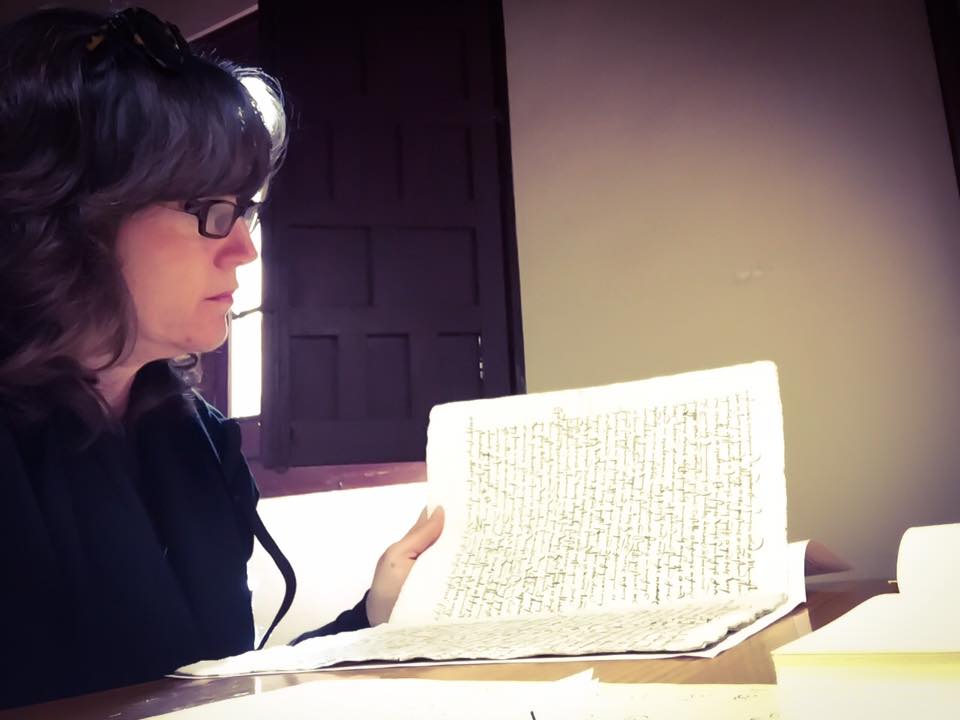
In 1487 he was named Bishop of Zamora, in 1494 he had the same honor in his beloved Salamanca, in 1498 ,after the prince died, he was the Bishop of Jaen, and finally, Archbishop of Sevilla from 1504 to 1523. This was an incredibly important post, as Sevilla was the only city in the country authorized to trade with the new world after its discovery and in many ways it became the epicenter of Spain for about 100 years. He later died in 1523 when he was on his way to Toledo to become the Archbishop of that city.
Impressive resume indeed, but what interests us here is his relationship to the Monastery of San Esteban in Salamanca and his role in making sure that the Spanish Monarchs approved and supported the efforts of the now famous sailor. In a letter that Colombus wrote to his son Diego in 1505 he said “He (referring to Deza) was the reason your majesties have the Indias”. This was not indeed the only time Colombus gave credit to Deza in his letters to his son, in fact he wrote about this very topic in a total of 5 letters that preceded this one in 1505. The sailor recognized more than once that he could have never crossed the Atlantic with the Pinta, the Niña and the Santa María ships. He goes on to write “Deza was the reason that I remained in Castile when I was on my way out”. Colombus had seen his project rejected for the second time and had become discouraged and thought that all was lost and that his initial voyage would never take place.. It was Deza who changed all of that.
After Juan II of Portugal rejected his project, Colombus had an initial audience with Queen Isabella and king Ferdinand. He showed them maps and told them stories of possible riches. Ferdinand was skeptical, but Isabella was curious enough and she had a group of scholars, cartographers and mathematicians to study the project. Diego Deza was practically the only one that supported him but this was not enough to move the project forward. Isabella and Ferdinand where more preoccupied at the time with the reconquering of the last territories from the Muslims in Granada.
History goes on to say that Deza and the sailor became very close and that their friendship would last until their death. Colombus writes in another letter to his son about Deza “Every time I have been in Castile, he has favored and honored me”. In fact, in November of 1486, Deza introduces Colombus to the court so that he can accompany the Spanish monarchs on their way to Salamanca. Once there, Deza gave him a place to live in the monastery of San Esteban and he covered all his expenses while the King and Queen made up their minds about the voyage.
During that time, the University of Salamanca was teaching the writings of Leonardo Dati who supported the idea that the earth was round. This helped Deza to convince the Monarchs that Colombus had a viable project. He even procured a salary from the court for Colombus of 10,950 maravedies. All of this made it possible for him to continue visiting Salamanca in order to help the monarchs understand his project while Diego Deza pushed, even against the rejection of many other court appointed scientists. Deza had become, without a doubt the most important mediator between the sailor and the monarchs.
The friendship between Deza and Colombus was decisive in the approval of the first voyage of the Pinta, the Niña and the Santa María to the new world. When you visit Salamanca, one of the most beautiful cities in Spain be sure to step into the Monastery of San Esteban and to embrace the history that, for better or for worse, changed the world for ever.


